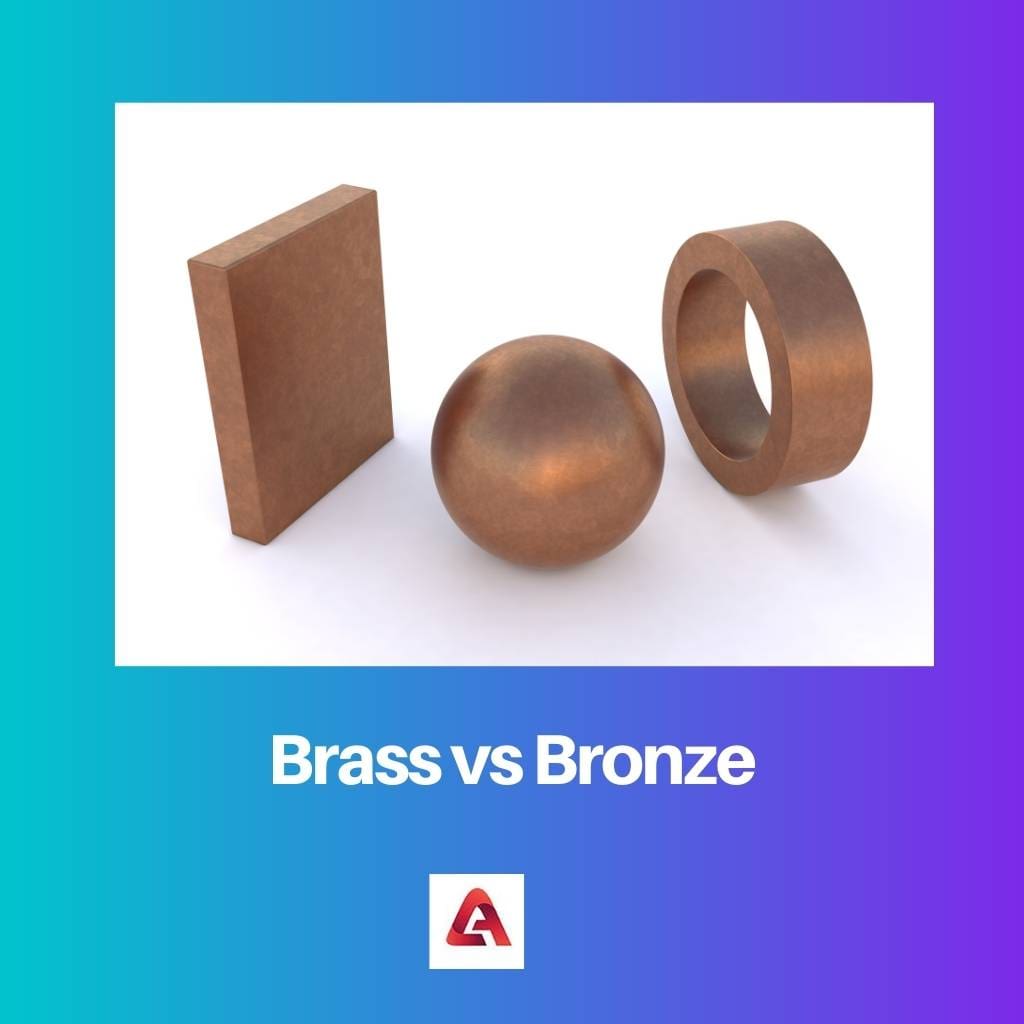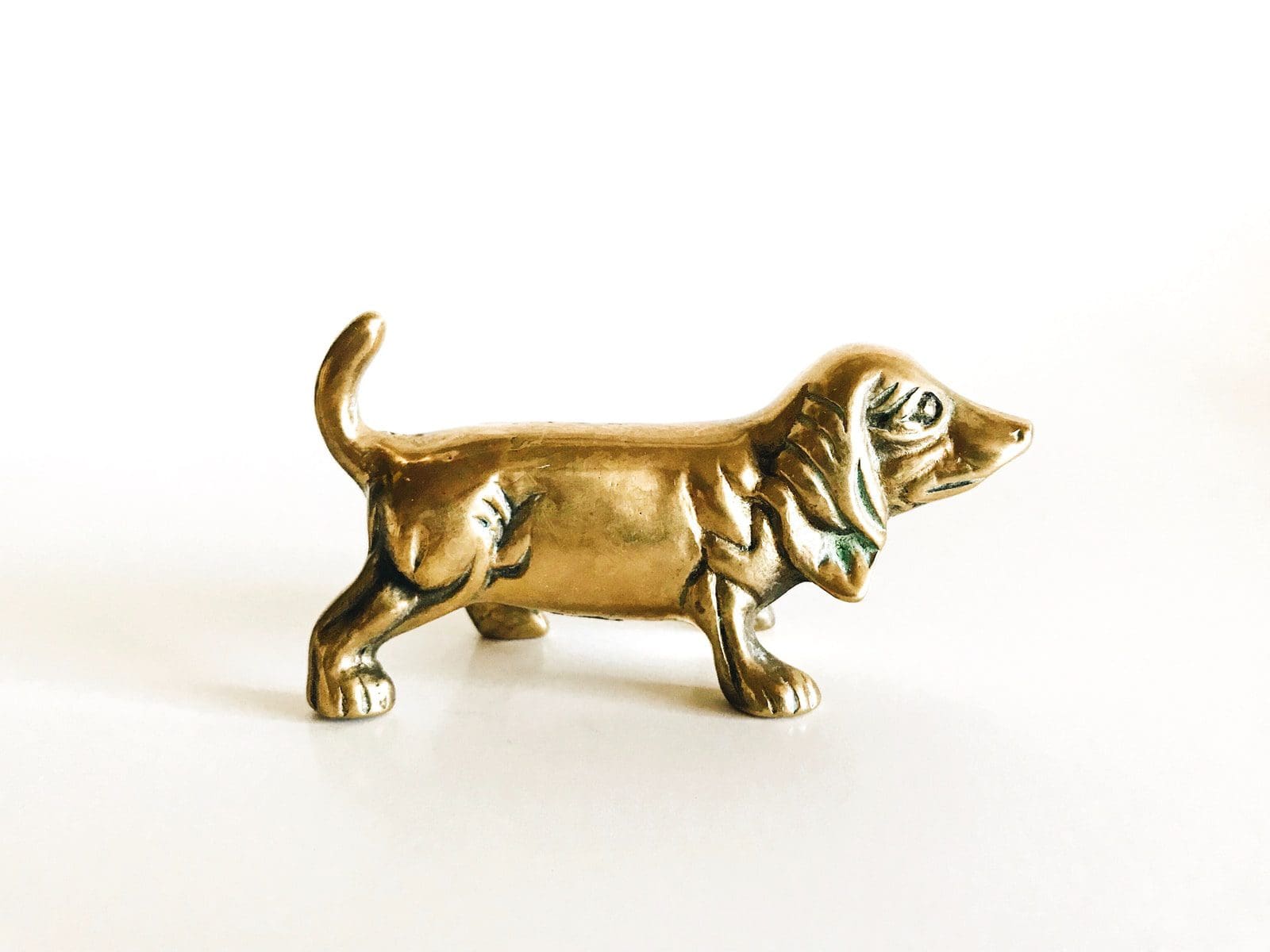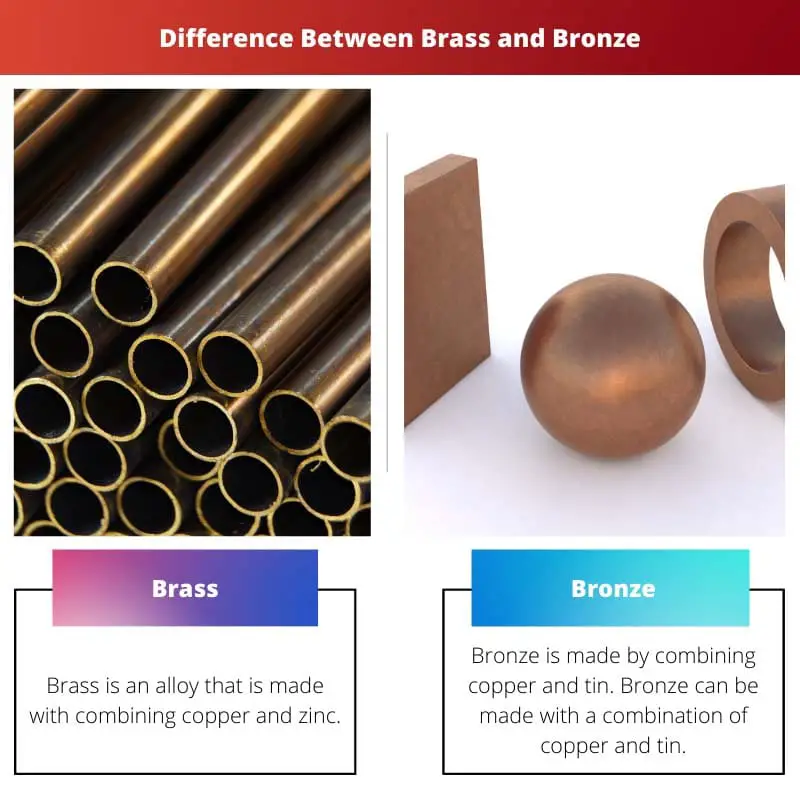You might frequently see that brass and bronze are marketed under the same category, and people do take them for the same. But the fact that both of them are totally distinguished from each other is not that well-known.
Brass and bronze are not just different in their properties but also different in their make-up and appearance. It is still quite shocking and maybe unusual of us to take them under the same category and treat them as if they are actually the same.
Key Takeaways
- Brass is an alloy of copper and zinc, while bronze is an alloy of copper and tin.
- Brass has a yellowish color and is more malleable and ductile than bronze.
- Bronze is harder, more brittle, and has a reddish-brown color compared to brass.
Brass vs Bronze
The difference between brass and bronze is that both alloys of metal are made with two or even more than two different combinations of metal alloys. The metals combined in brass are copper and zinc, while in that bronze, it’s copper and tin. Bronze can be made with a combination of copper and tin and adding some elements of phosphorus and aluminum.

Brass came out in 500 BC. As said before, Brass is made from a combination of two different metals and are copper and zinc. Zinc is a metal that is rarely found in its natural state.
People in the early era discovered that melting copper with calamine, known as zinc ore, yielded a golden-colored tarnished resistant metal. That metal came out to be very useful because its melting point is very high and the malleability level.
Bronze is an alloy that belongs to the leading bronze age that was way back in 3500 BC with the Sumerians.
When bronze was discovered, people started creating even more and more detailed sculptures and building materials, large tools, armor, or any weapon with metal. Bonze was found to be a much stronger and more durable alternative to copper and even stone.
Comparison Table
| Parameters of Comparison | Brass | Bronze |
|---|---|---|
| Composition | Brass is an alloy that is made with combining copper and zinc. | Bronze is made by combining copper and tin. Bronze can be made with a combination of copper and tin, along with adding some elements of phosphorus and aluminum to it. |
| Colors | Similar to that of gold, muted yellow. | Reddish-brown. |
| Properties | Low melting point, high level of malleability. Not much hard as steel. | The melting point depends on the amount of tin present in it. Hard and brittle in look. |
| Uses | Plumbing, electronics, musical instruments, decorative supplements, etc. | Used in fitting boats and ships, connectors of electrical items, and bells and cymbals of top quality. |
| History | Brass was known to exist in 500 BC for the very first time. | Bronze dates back to about 3500 BC. |
What is Brass?
Brass came out in 500 BC. As said before, Brass is made from a combination of two different metals and are copper and zinc. Zinc is a metal that is rarely found in its natural state.
People in the early era discovered that melting copper with calamine, known as zinc ore, yielded a golden-colored tarnished resistant metal. That metal came out to be very useful because its melting point is very high and the malleability level.
Brass is used in a wide range of works and accessories. It is used in companies creating corrosion along with fixtures and fasteners that are spark resistant.
Goods made with brass have the ability to last for many years, both indoor goods and outdoors too. Brass is basically an alloy that is used as a substitute as atoms of any two substitutes might replace each other, but this is only applicable in the same crystal or in the same material.

What is Bronze?
Bronze is an alloy that belongs to the leading bronze age that was way back in 3500 BC with the Sumerians.
When bronze was discovered, people started creating even more and more detailed sculptures and building materials, large tools, armor, or any weapon with metal. Bonze was found to be a much stronger and more durable alternative to copper and even stone.
Bronze has a wide range of usability. It is used in appliances for construction, building electronic items, medals, and musical instruments. In industries, apart from appliances, it is used for blushing and bearing.
This is so because of the advantage of its low metal friction. Bronze is resistant to corrosion, and that is why it has a nautical application too.
In the archeological period, bronze was known to be the hardest metal, and this was the period when it was called the bronze age. In the early period of the 4th millennium, the bronze age was started in India and in Eurasia.

Main Differences Between Brass and Bronze
- The main difference between brass and bronze is that the metals combined in brass are copper and zinc, while in that bronze, it’s copper and tin. Bronze can be made with a combination of copper and tin, along with adding some elements of phosphorus and aluminum to it.
- The color of brass is similar to that of gold, muted yellow, while that of bronze is Reddish brown.
- The properties of brass are- Low melting points and a high level of malleability. Not much hard as steel, while bronze’s melting point depends on the amount of tin present in it. It is also hard and brittle in look.
- Brass is widely used in Plumbing, electronics, musical instruments, decorative supplements, etc., while bronze is used in the fitting of boats and ships, connectors of electrical items, and bells and cymbals of top quality.
- Brass was known to exist in 500 BC for the very first time, while Bronze goes way back and dates back to about 3500 BC.

- https://meridian.allenpress.com/rct/article-abstract/52/3/605/91081
- https://books.google.com/books?hl=en&lr=&id=kxA8AAAAIAAJ&oi=fnd&pg=PR7&dq=what+is+bronze&ots=1bg4DWfOSu&sig=ZG0tKxOtN5eZ552LugZU8Hn-DzI

The in-depth exploration of the differences between brass and bronze in the article is particularly enlightening. The detailed comparison and historical accounts provide a holistic understanding of these distinct materials, catering to readers’ intellectual curiosity.
The article presents a detailed and enlightening comparison between brass and bronze, focusing on their composition, colors, uses, and historical significance. The historical origins of both materials are particularly intriguing and add depth to the content.
The comparative analysis of brass and bronze provided in the article is truly enlightening. The content is both educative and fascinating, specifically in offering insights into the historical origins and unique properties of these alloys.
I echo your sentiments, Thompson Ruby. The article’s comprehensive examination of the differences between brass and bronze presents an informative and captivating perspective on these materials.
This article offers a comprehensive and insightful account of the differences between brass and bronze. The detailed comparison table and historical background provide a rich understanding of these alloys, debunking misconceptions and deepening knowledge on the subject.
I completely agree, Dale89. The article’s detailed coverage and historical context of brass and bronze are both captivating and informative, catering to readers with varying levels of knowledge on metallurgy.
I share your viewpoint, Dale89. The thorough examination of brass and bronze in the article effectively conveys their differences, properties, and uses in a manner that enlightens readers with an interest in materials science.
The distinction between brass and bronze, particularly in terms of composition, color, and properties, is well explained in this article. The historical background provided also adds depth to the understanding of these materials.
Absolutely, Kirsten82. The detailed comparison table makes it easier to comprehend the differences between brass and bronze. It’s fascinating to learn about their specific uses and historical significance.
I concur with Kirsten82 and Campbell Hannah. The article’s emphasis on the historical background and unique properties of brass and bronze effectively enhances the reader’s knowledge on these materials.
The article presents an exceptional analysis of the unique attributes and uses of brass and bronze. The historical context and detailed comparative examination of both alloys offer valuable insights into the world of metallurgy.
I concur, Jack Bell. The article’s elucidation of the differences and applications of brass and bronze serves as a highly educational resource for individuals seeking to broaden their knowledge of materials science.
This article provides a comprehensive understanding of the differences between brass and bronze. It educates the reader on the composition, colors, properties, uses, and historical timelines of both materials, which is highly beneficial for anyone seeking to learn more about metallurgy.
I share your viewpoint, Dcampbell. The detailed comparison and historical context of brass and bronze in the article are informative and immensely enriching for readers.
The article provides an enlightening comparison between brass and bronze, offering a detailed exploration of their composition, colors, properties, uses, and historical origins. It effectively clarifies misconceptions and enriches the reader’s understanding of these alloys.
I echo your sentiments, Bell Nicole. The article’s insightful coverage and historical context of brass and bronze are truly enriching, providing a comprehensive understanding of these unique materials.
The detailed historical accounts of the origins of brass and bronze are particularly fascinating. The article effectively communicates the unique attributes and uses of these materials, providing readers with a profound understanding of their differences.
I agree, Saunders William. The article’s elucidation on the uses and historical significance of brass and bronze enriches the reader’s knowledge and appreciation of these distinct alloys.
I concur with the sentiments expressed by Saunders William and Hollie Reid. The detailed coverage of brass and bronze in the article contributes to a comprehensive understanding and serves as a valuable resource for individuals interested in materials science.
The information about the difference between brass and bronze is truly enlightening. Many people do, in fact, believe that they are the same. This article provides a clear and detailed understanding of the properties and history of both materials.
I completely agree with you Lilly69. The article dispels a common misconception and educates readers on the unique features of brass and bronze.